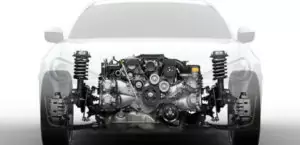The 4G69 engine was the last in the famous Sirius series of the Mitsubishi concern. Its debut took place in 2003, and although after 2 years the Japanese auto giant replaced the engine with another, more modern one, its production did not stop completely.
The 4G6 family also includes engines: 4G61, 4G62, 4G63, 4G63T, 4G64 and 4G67.
At first, this motor was installed only on the concern’s models, such as Grandis, Outlander and Galant. Today, the production of the in-line 4-cylinder 2.4-liter engine and its components continues under license in China.
Despite the working volume of 2.4 liters, the fuel consumption of 4g69 on average does not exceed 9.5 liters per 100 km.
In addition, a version with direct fuel injection GDI was also produced, the compression ratio on such engines was increased to 11.5.
Specifications
| Production years | since 2003 |
| Displacement, cc | 2378 |
| Fuel system | injector |
| Power output, hp | 160 / 5750 rpm 165 / 6000 rpm (GDI) |
| Torque output, Nm | 213 / 4000 rpm 217 / 4000 rpm (GDI) |
| Cylinder block | cast iron R4 |
| Block head | aluminum 16v |
| Cylinder bore, mm | 87 |
| Piston stroke, mm | 100 |
| Compression ratio | 9.5 11.5 (GDI) |
| Features | SOHC |
| Hydraulic lifters | no |
| Timing drive | belt |
| Phase regulator | MIVEC |
| Turbocharging | no |
| Recommended engine oil | 5W-30 |
| Engine oil capacity, liter | 4.3 |
| Fuel type | petrol |
| Euro standards | EURO 4 |
| Fuel consumption, L/100 km (for Mitsubishi Outlander 2005) — city — highway — combined |
12.6 7.7 9.8 |
| Engine lifespan, km | ~350 000 |
| Weight, kg | 175 |
The engine was installed on:
- Mitsubishi Galant DJ1 in 2004 – 2012;
- Mitsubishi Grandis NA4 in 2003 – 2011;
- Mitsubishi Eclipse 4G in 2005 – 2012;
- Mitsubishi Lancer CS in 2004 – 2006;
- Mitsubishi Outlander CU0 in 2003 – 2006.
Disadvantages of the Mitsubishi 4G69 engine
- As with all engines in this series, the main problem here is unreliable belts;
- The balance shaft belt can suddenly break and get caught under the timing belt;
- At high engine speeds, this turns into a broken timing belt and bending of the valves;
- The tension roller and the drive of mounted units also have low reliability;
- There are no hydraulic lifters here and valve clearances need to be adjusted every 50,000 km.






